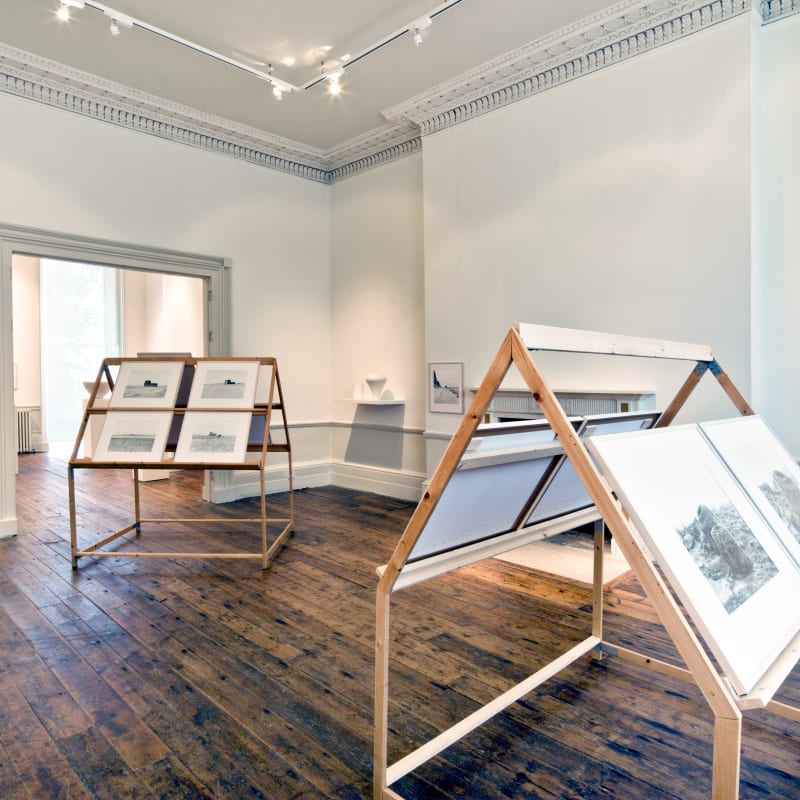Ensō: A circle that is hand-drawn in one or two uninhibited brushstrokes to express a moment when the mind is free to let the body create.
The Buddhist minimal concept of Ensō, where focused repetition leads to perfection, brings two artists together. The first, Ursula Schulz-Dornburg, is a Dusseldorf based artist known for her interest in architecture and topographical style focusing on a single form and repeatedly photographing its variants. The second, Taizo Kuroda, is a Japanese ceramicist working in unglazed white porcelain who concentrates intensely on a limited number of shapes.
Each tradition and approach is different, yet an underlying current unites both practices. In their attempt to access something beyond physical representation both pass close to the concept of Ensō. We find it present in the vocabulary of both artists.
Ursula Schulz-Dornburg’s investigations takes the form of a series of photographs. She develops narrative topographies, often focusing on ancient transitory places, whose combinations build different perspectives and layers. They rarely have people in them, but feel inhabited, they have presence. Something beyond the surface is glimpsed through the repetition of the external forms.
Taizo Kuroda uses unglazed white porcelain in a similar investigative process. For many years he focused on the same six shapes, working on them over and over again. His latest obsession is cylinders. He has described long days and nights focusing on cylinders trying to achieve the perfect shape. In order to relax between these sessions, he makes tea pots! This is because they have a known structure and rules; a handle, a mouth and a spout. Through these repeated shapes he attempts to go beyond the form. “What I am ultimately looking for is a perfect space. I am not ready yet to make such a form however. With a wheel it is possible to make a piece that is almost perfect, but I cannot allow myself to do that yet.”
Different realities engage together. The outward form of both artists is what the viewer engages with first. Yet in each practice this structure is subtly used to describe what is not seen.




